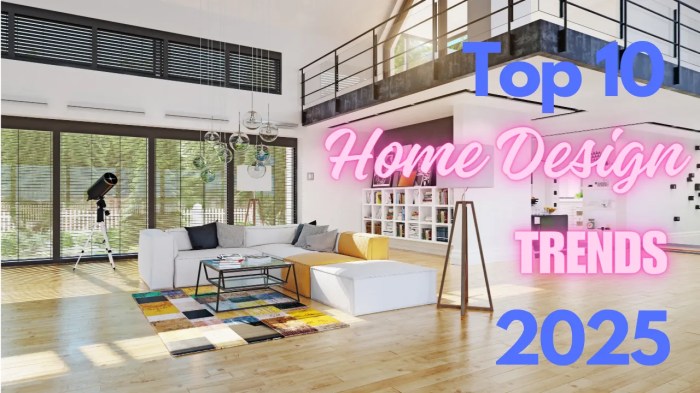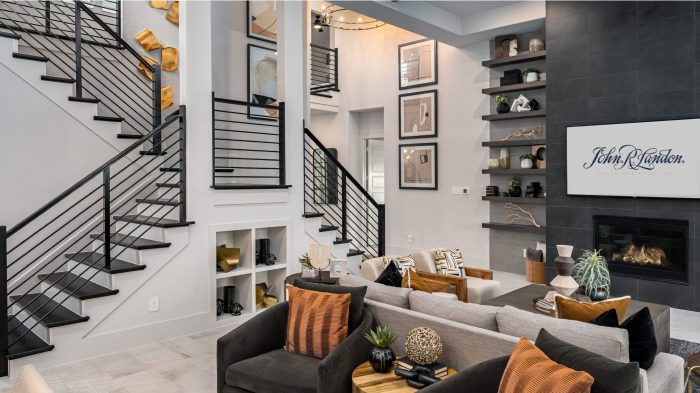Exploring the upcoming Fine Homebuilding Design Trends for 2025 opens up a world of innovation and creativity in the realm of home construction. From sustainable design to smart technology integration, these trends are shaping the way we live in our homes, offering a glimpse into the future of modern living.
As we delve deeper into the evolving landscape of home design, we uncover the intricate balance between aesthetics and functionality, paving the way for homes that are not only visually stunning but also highly efficient and sustainable.
Overview of Fine Homebuilding Design Trends for 2025

In the fast-paced world of homebuilding, staying updated with the latest design trends is crucial for both homeowners and professionals in the industry. These trends not only dictate the aesthetics of homes but also play a significant role in enhancing functionality and improving overall quality of life.
Design trends in homebuilding are influenced by a variety of factors, including advancements in technology, changes in lifestyle preferences, environmental concerns, and societal shifts. Understanding these key drivers can provide valuable insights into the evolution of design trends and help individuals make informed decisions when it comes to building or renovating their homes.
Impact of Technology on Home Design
With the rapid advancement of technology, smart homes have become increasingly popular, integrating automation and connectivity to enhance convenience and efficiency. Features like energy-efficient appliances, smart thermostats, and home automation systems are now considered essential elements of modern home design.
Sustainability and Eco-Friendly Design
The growing focus on sustainability and eco-friendly practices has led to a surge in demand for green building materials and energy-efficient solutions. Design trends in 2025 are expected to prioritize environmentally conscious choices, such as solar panels, recycled materials, and passive design strategies to reduce carbon footprint and promote a healthier living environment.
Adaptable and Multifunctional Spaces
As the way we live and work continues to evolve, homes are being designed to accommodate diverse needs and functions. Flexible, multifunctional spaces that can easily transform to meet changing requirements are becoming increasingly popular. From home offices and workout areas to entertainment zones and guest accommodations, versatility and adaptability are key considerations in modern home design.
Sustainable Design Trends

In recent years, sustainable design has gained significant traction in the homebuilding industry as more homeowners and builders prioritize eco-friendly practices.
Innovative Eco-Friendly Materials
One of the key trends in sustainable design is the use of innovative eco-friendly materials such as bamboo flooring, recycled glass countertops, and reclaimed wood. These materials not only reduce environmental impact but also add a unique aesthetic to homes.
Construction Techniques
- Passive solar design: Utilizing the sun's energy for heating and lighting, reducing the need for artificial heating and cooling.
- Green roofs: Adding vegetation to roofs to improve insulation, reduce stormwater runoff, and increase biodiversity.
- Net-zero energy homes: Homes designed to produce as much energy as they consume, often through solar panels and energy-efficient appliances.
Environmental Impact Comparison
When comparing traditional design practices with sustainable alternatives, it becomes clear that sustainable design leads to lower carbon emissions, reduced waste generation, and overall healthier living environments for occupants. By embracing sustainable design trends, the homebuilding industry can make a significant impact on the environment.
Smart Home Technology Integration
In the rapidly evolving landscape of modern home design, the integration of smart home technologies has become increasingly prevalent. These innovative technologies are revolutionizing the way we interact with our living spaces, offering enhanced convenience, efficiency, and security for homeowners.
Voice-activated Assistants
Smart speakers equipped with voice-activated assistants such as Amazon Alexa or Google Assistant have become a popular addition to many homes. These devices allow homeowners to control various aspects of their home environment, such as lighting, temperature, and entertainment systems, simply by using voice commands.
Smart Thermostats and Lighting Systems
- Smart thermostats like Nest Learning Thermostat can learn your heating and cooling preferences over time, optimizing energy usage and saving you money on utility bills.
- Smart lighting systems, like Philips Hue, can be controlled remotely via a smartphone app, allowing you to adjust lighting levels and colors to suit different moods or activities.
Home Security Systems
- Smart doorbell cameras, such as Ring Video Doorbell, provide homeowners with real-time video footage of their front door, enhancing security and allowing for remote monitoring of visitors.
- Smart locks offer keyless entry options and the ability to monitor and control access to your home from anywhere using a smartphone.
Challenges and Benefits
While the integration of smart home technologies offers numerous benefits, such as increased convenience, energy efficiency, and security, there are also challenges to consider. These may include initial setup costs, potential cybersecurity risks, and the need for ongoing updates and maintenance to ensure optimal performance.
Interior Design Innovations
In the ever-evolving world of interior design, 2025 brings forth a wave of new trends and innovations that redefine the way we perceive and experience our living spaces.
Adaptable Spaces and Multi-functional Rooms
Adaptable spaces and multi-functional rooms have become increasingly popular in interior design, as homeowners seek versatility and flexibility in their living environments. By incorporating movable walls, sliding partitions, and modular furniture, interior designers are creating spaces that can easily transform to suit different needs and activities.
This trend not only maximizes the functionality of a room but also enhances the overall aesthetic appeal of the space. Whether it's a home office that doubles as a guest bedroom or a living room that converts into a home theater, the concept of adaptable spaces allows for seamless transitions and efficient use of space.
Color, Textures, and Materials
In 2025, interior design trends are leaning towards a harmonious blend of colors, textures, and materials that create a sense of balance and warmth in the home. Earthy tones, such as warm neutrals, terracotta, and olive green, are taking center stage, bringing a sense of tranquility and connection to nature indoors.
Textures play a crucial role in adding depth and visual interest to a space, with a focus on tactile materials like natural wood, rattan, and plush fabrics. Mixing and matching different textures create a layered and inviting atmosphere that invites relaxation and comfort.
As for materials, sustainable and eco-friendly options are becoming increasingly popular, with an emphasis on recycled materials, reclaimed wood, and organic textiles. This shift towards more sustainable choices reflects a growing awareness of environmental issues and a desire to create homes that are not only beautiful but also eco-conscious.
Outdoor Living Spaces
Outdoor living spaces play a crucial role in modern home designs, offering homeowners a retreat to relax, entertain, and connect with nature. These spaces are becoming increasingly popular as people seek to enhance their quality of life and maximize their living space.
Popular Trends in Outdoor Living Spaces
Outdoor kitchens, fire pits, and sustainable landscaping are some of the popular trends shaping outdoor living spaces in 2025. Homeowners are incorporating these features to create functional and aesthetically pleasing outdoor environments that blend seamlessly with their indoor living areas.
- Outdoor kitchens: The trend of outdoor kitchens continues to gain momentum, allowing homeowners to cook, dine, and entertain outside. These spaces often feature built-in grills, countertops, sinks, and storage, providing a complete culinary experience in the fresh air.
- Fire pits: Fire pits are a popular focal point in outdoor living spaces, providing warmth, ambiance, and a gathering spot for family and friends. Whether gas-powered or wood-burning, these features add a cozy touch to outdoor gatherings year-round.
- Sustainable landscaping: With a growing emphasis on sustainability, homeowners are incorporating eco-friendly landscaping elements such as native plants, rain gardens, and permeable pavers. These features not only enhance the beauty of outdoor spaces but also promote environmental conservation.
Outdoor Spaces as an Extension of Indoor Living Areas
Outdoor living spaces are no longer just separate areas of a home; they are evolving into extensions of indoor living areas. Homeowners are blurring the lines between indoor and outdoor spaces by creating seamless transitions through design elements such as sliding glass doors, covered patios, and outdoor furniture that mirrors indoor styles.
Final Conclusion
In conclusion, Fine Homebuilding Design Trends for 2025 are set to revolutionize the way we think about our living spaces. By embracing sustainability, technology, and innovative design concepts, homeowners can look forward to a future where their homes are not just shelters, but reflections of their values and aspirations.
Frequently Asked Questions
How do design trends influence the aesthetics of homes?
Design trends play a crucial role in shaping the visual appeal of homes, influencing everything from color schemes to architectural styles.
What are some examples of smart home technologies integrated into modern home designs?
Smart thermostats, automated lighting systems, and security cameras are just a few examples of technologies enhancing convenience and efficiency in homes.
Why are outdoor living spaces important in modern home designs?
Outdoor living spaces provide a seamless transition between indoor and outdoor areas, offering homeowners a place to relax and entertain.







